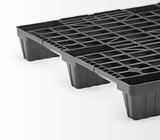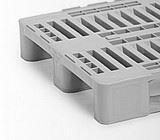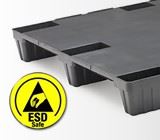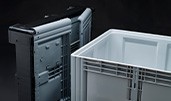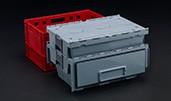To understand to what extent the manufacture of plastic pallets has been perfected today, it is important to highlight the effort that companies such as Naeco, previously Nortpalet specializing in the creation of this type of logistics elements, are making when developing a new product. The objective: to provide the client with a safe, sustainable solution capable of adapting to the logistical, transport and storage needs of the company in any sector and of reducing time and economic costs.
The key to this significant evolutionary and quality change in pallets is due in part to product tests. Do you want to know what they are and what they are for? We explain it to you!
Step-by-step product testing
When a new plastic pallet is manufactured, before reaching the market, it is subjected to numerous tests and trials carried out in two phases to guarantee its maximum durability, resistance to impact and to support the highest possible load capacity. The steps are the following.
• Predict the structural and dynamic behaviour of the product. This first phase is carried out on a virtual plastic pallet, that is, on its design that with a computer simulation program allows us to predict the behaviour of the product in the face of real work demands and from where the static, dynamic and load capacities are initially defined. rack. With the use of this tool, it is possible to improve the design of the pallet and optimize it to meet the specifications expected of it throughout its useful life.
• Carrying out tests on real product. Once the product has been developed, the second phase is carried out in our testing laboratory, where its resistance capabilities are finally defined.
The importance of ISO 8611
It is important to note that to carry out the tests mentioned in the previous paragraph, the ISO 8611 standard relative to pallets for handling goods and reference flat pallets in the sector is taken as a reference.
What is done by means of this standard is to define the tests that have to be carried out on the pallets to determine their resistance capacities under static, dynamic and rack loads. The types of trials or tests are divided into two groups:
• Load tests (stiffness).
• Durability tests (impact resistance).
But to go deeper into this topic, we present the different types of cargo that exist, how much weight the pallets are capable of supporting, and depending on that value, what type of model is recommended to choose according to the intended use function.
Types of cargo for pallets
To define the load, weight, size and resistance parameters and at the same time meet the criteria according to the safety standards established by UNE EN ISO 8611, it is essential that you first know the three different types of cargo that exist:
• Pallet with static load. It refers to the load that the pallet supports on the ground, or, failing that, any flat and horizontal surface where the pallet rests entirely on it. This is the highest load value of the three, and the least restrictive. Regarding the load tests that must be carried out to determine the static load capacity that the pallet will support, it is necessary to place 4 bars on the surface of the pallet and a load plate on them that simulates the weight and its distribution. If the deformation of the same, after 48 hours, does not exceed 2% of the length of the window, it is concluded that the pallet resists said load, and this is considered a static load.
• Pallet with dynamic load. This type of load has to do with the maximum permissible load of the pallet during its transport and handling with a forklift or other system, guaranteeing the safe lifting of the pallets once they are loaded. To determine the dynamic load that a pallet supports, a series of bars and a plate must be placed on the pallet to simulate the weight and its distribution, while the supports must be copied to the blades of a forklift. If after 30 minutes, the deformation of the pallet does not exceed 20 mm, the pallet resists said load, and this is considered as dynamic load.
• Pallet with rack load. It refers to the maximum amount of weight that a pallet can support on a rack-type shelf (with two supports), supported only by the two sides. It is undoubtedly the most restrictive load as its support points have been reduced. To determine the maximum load, it is assessed that the deformation of the pallet, after 24 hours under load, does not exceed 2% of the distance between supports. In general, the distance of a conventional shelf is 1,000 mm, so the allowable deformation would be up to 20 mm.
Bonus track: custom load and impact tests
In specific projects and when the client requires it, custom load tests are also carried out.
Regarding impact tests, at Naeco, previously Nortpalet we have a test space to carry out different simulations or tests:
• Dynamic test bench to execute different tests from those defined in the ISO 8611 standard. With this procedure the resistance and durability of our products is tested against the most diverse impacts that exist in a handling environment.
• Corner drop tests, where the pallet is dropped from different heights and impacts its corner.
• Roller track tests.
Conclusion
Fortunately, logistics is an area that has become very professional in recent years. The result of this evolution and improvement has to do in large part with the fact that plastic pallets have managed to increase their quality standards thanks to the tests they are subjected to daily in the testing laboratories to guarantee the customer the better protection, security and maintenance of your goods.
Therefore, knowing exactly what maximum load capacity a plastic pallet can withstand is a fundamental aspect since, if it exceeds the maximum recommended value, it could run the risk of damage, causing damage to the transported product, and putting at risk the security in your environment. In conclusion, paying attention to the cargo value is important, not only in order to better manage the warehouse and the transport of goods, but also to take care of and guarantee the safety of the products and the environment. And you, do you know what pallet you need depending on the load of your merchandise? If you have any doubts, please do not hesitate to contact us.



